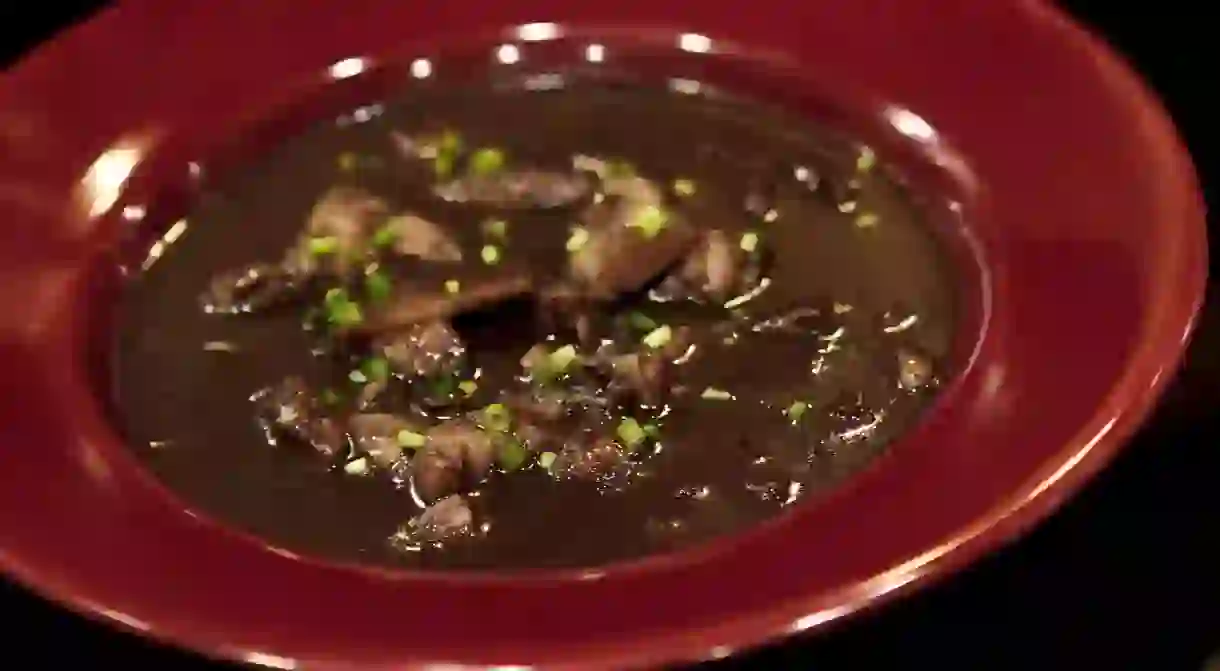The Most Adventurous Food to Try in The Philippines

Blood soup, fertilised duck embryo and woodworms; power through your weak constitutions and enter a world of delicious flavours with these adventurous Filipino food classics.
The Philippines doesn’t fall short on unique eats. With a national love for food, hatred of waste and an ingenious skill to recreate dishes in the Filipino style, the country has invented bold dishes that have become a cherished part of local identity. Instead of running the other direction, follow your curiosity and give these dishes a try – you might surprise yourself.
Balut
Starting with what many deem the king of adventurous food experiences in the Philippines, there’s the much-loved balut. This street food is a hard-boiled, fertilized duck egg containing a developing duck embryo. People are usually turned off by the visible formation of the duck head and beak (and sometimes feathers), but the egg is incubated for only as long as the bones remain soft enough to chew. Filipinos usually know when a balut vendor is in the area as they are known to loudly cry out “baluuuuuuut!” as they make their way down the streets.

Skewered animal innards
The Philippines is big on street food, and there’s an extensive variety of what the country’s streets have to offer curious palates. Many of these are often served on a stick. The more regular ones include kwek-kwek (deep-fried coated quail eggs), fish balls and squid balls. There’s also the ever-famous isaw (chicken or pig intestines), balunbalunan (chicken gizzard), betamax (coagulated chicken or pig blood), helmet (chicken head) and adidas (chicken feet). With even pig’s ears ending up on street food carts, you can be sure that no animal part goes to waste on this side of the globe.

Dinuguan
This classic Filipino dish is usually served on dining tables instead of on the streets. Dinuguan is essentially a savory blood stew made with pig’s blood and pork offals (dugo means ‘blood’ in Filipino). This dark-tinted stew is rich and extremely flavorful – enough to make adventurous eaters forget that they’re eating pig ears, intestines and snout slowly simmered in its own blood. If the Scottish have haggis, the Filipinos have dinuguan.

Strange food pairings
Filipinos love playing with different flavors. As a result, they’ve created matches made in heaven that might seem like pure absurdity to those who have yet to try them. One such pairing is the savory dinuguan with a sweet rice cake called puto. Another is champorado, a sweet chocolate rice porridge usually eaten for breakfast, with tuyo, a salted dried fish also popularly eaten for breakfast. And then there’s manggang hilaw (sour green mango) with bagoong (a strong-smelling fermented shrimp paste). These combos are must-tries that will make eating one seem incomplete without the other.

Tamilok
A curious delicacy, especially famous on the island of Palawan, is a woodworm called tamilok. This woodworm is taken out of the trunk of mangroves and usually eaten raw along with vinegar, and sometimes chili. Its taste very closely resembles that of oysters.

Sweet Spaghetti
This dish should serve as a bit of a warning to travelers ordering pasta in the Philippines—there is such a thing as “Pinoy (Filipino) Spaghetti.” The country’s take on the Italian classic is much sweeter than anything you’ll ever find in an Italian restaurant. Sliced hot dogs area vital ingredient in this dish, so don’t be surprised to find some of that mixed in. Some versions even contain banana ketchup. This condiment is hugely popular in The Philippines and is served in many local and commercial restaurant chains.

Ice cream in burger buns
Street vendors sell local ice cream known as “sorbetes” from colorful wooden push carts. They push the cart, usually carrying two to three flavors, around town, ringing a bell to attract customers’ attention. While buyers can choose to have their ice cream scooped into wafer or sugar cones, they can also have it inside a burger bun. It’s really just a Filipino version of the ice cream sandwich. Standard sorbetes flavors include ube (purple yam), cheese, and avocado.

Sisig
It would probably be a difficult feat to find a Filipino who doesn’t love sisig. Usually served hot, sizzling away on a cast iron plate, this perfect beer companion is made up of parts of a pig’s face (cheeks, snout, and ears). For a creamier consistency, some even throw in a bit of the pig’s brain too. People should try this dish at least once; It’s a national favorite for good reason.














